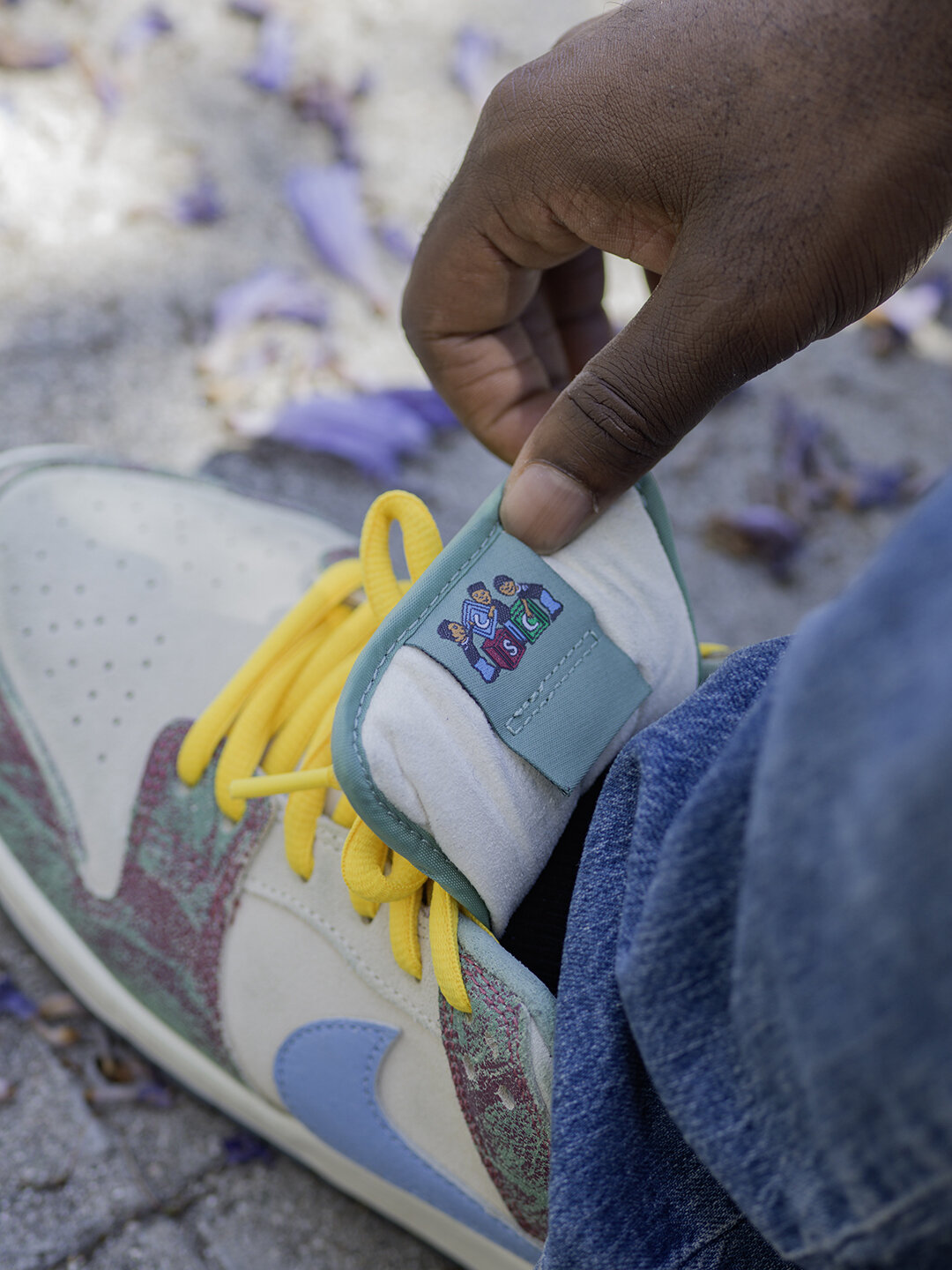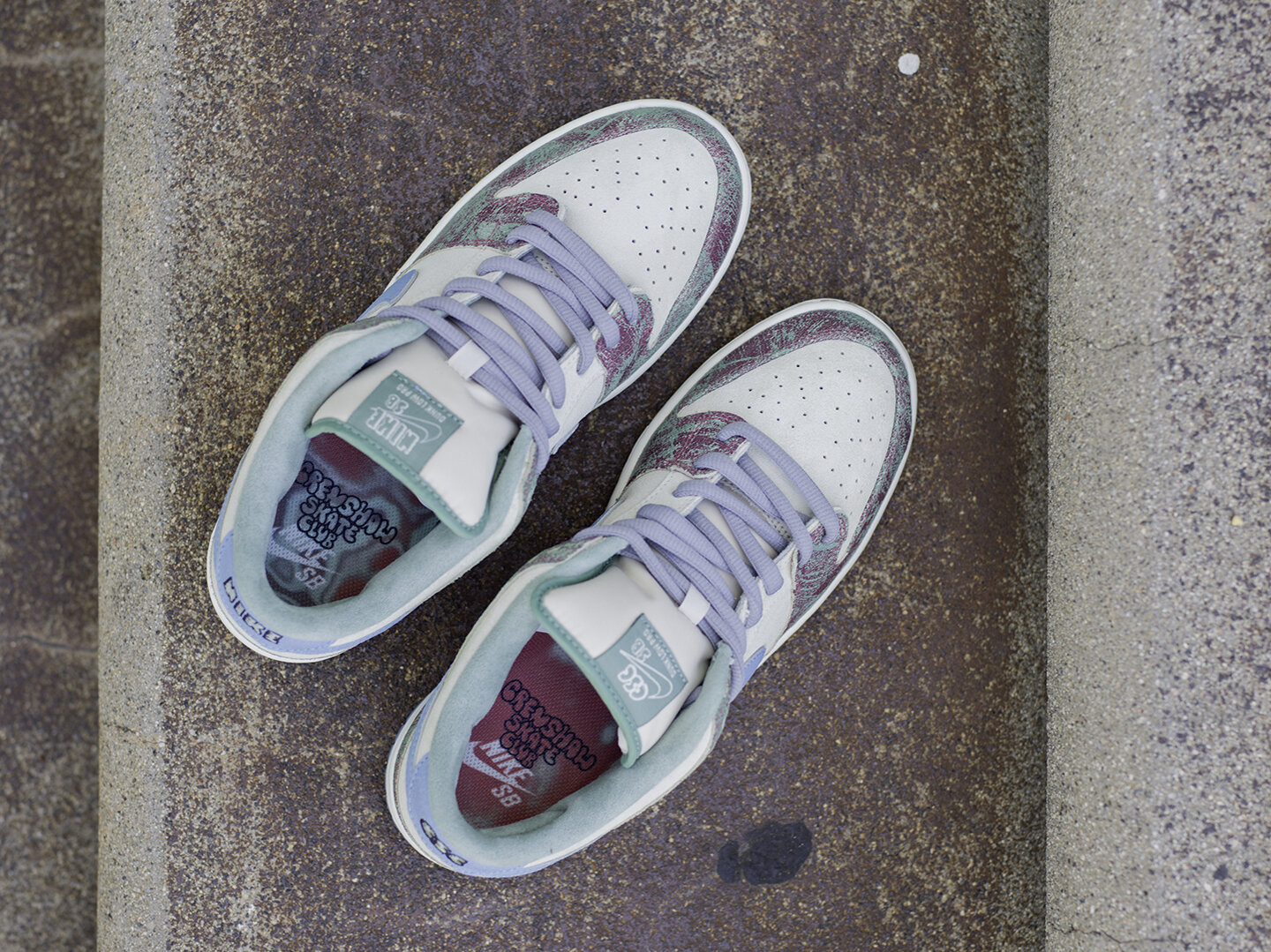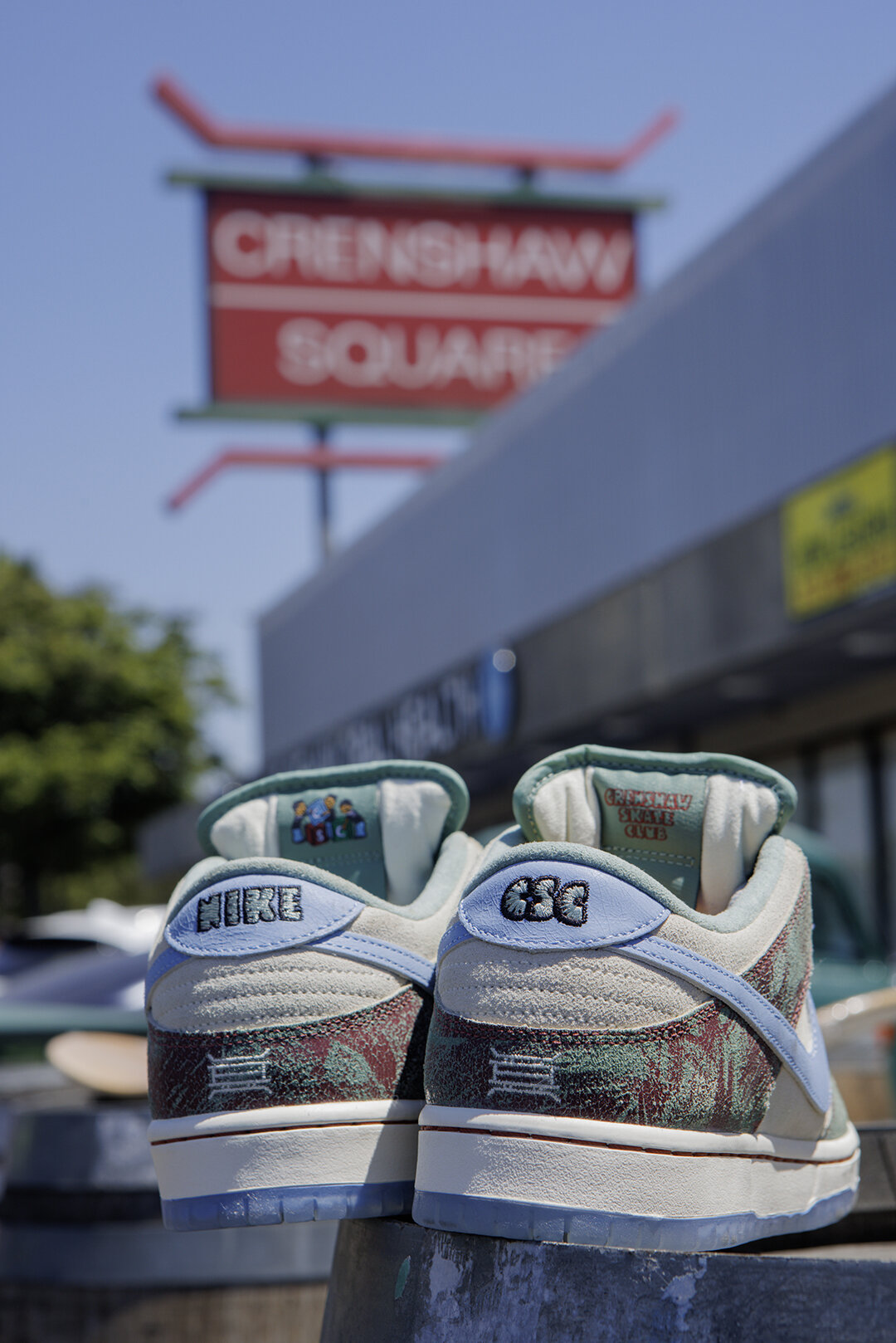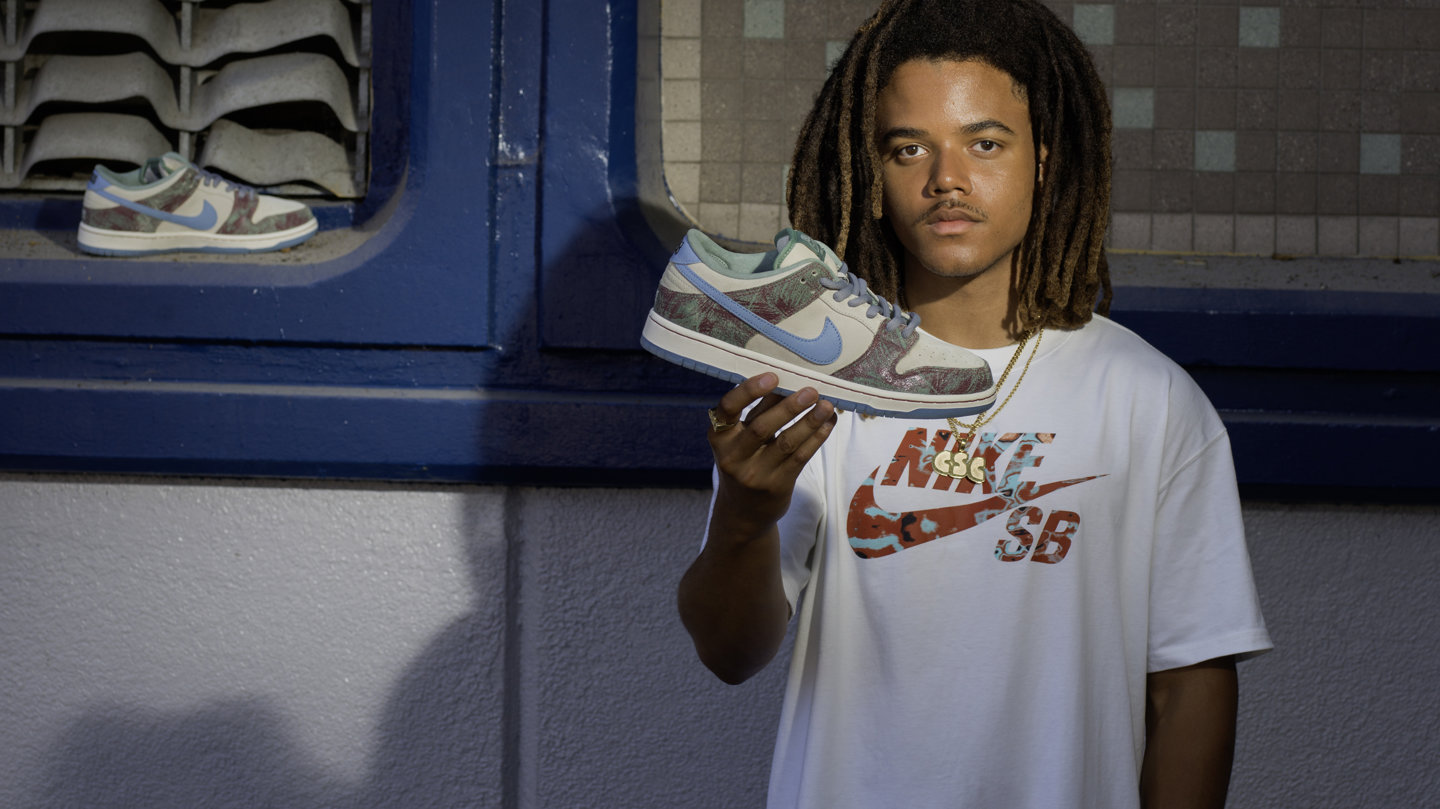
Crenshaw Skate Club
07.28.23
Like many teenagers, Tobias “Tobey” McIntosh found his passion and dove in headfirst back in 2017. Drawn to the independence and creativity he found in skateboarding, the gears began turning and as his skills progressed, he immersed himself in every aspect of skate culture around him. From obsessively learning tricks at Crenshaw Square with his friends to traversing Fairfax solo as a 14-year-old, Tobey embraced the boundless energy of skateboarding, finding an outlet for the burgeoning creativity skating fostered.
Initially an homage to his local crew, Crenshaw Skate Club was born from his desire to belong but quickly became symbolic to his larger vision of inclusivity and representation. With a mission and message at the forefront of everything he pursues, CSC grew to a globally recognized brand, reaching far beyond skateboarding but never losing focus or intent.
With a new Nike SB collaboration on deck, we caught up with Tobey during his break from the academic rigors of Stanford University to talk about his roots and how a small patch of pavement in LA influenced the design of the Crenshaw Skate Club Dunk.
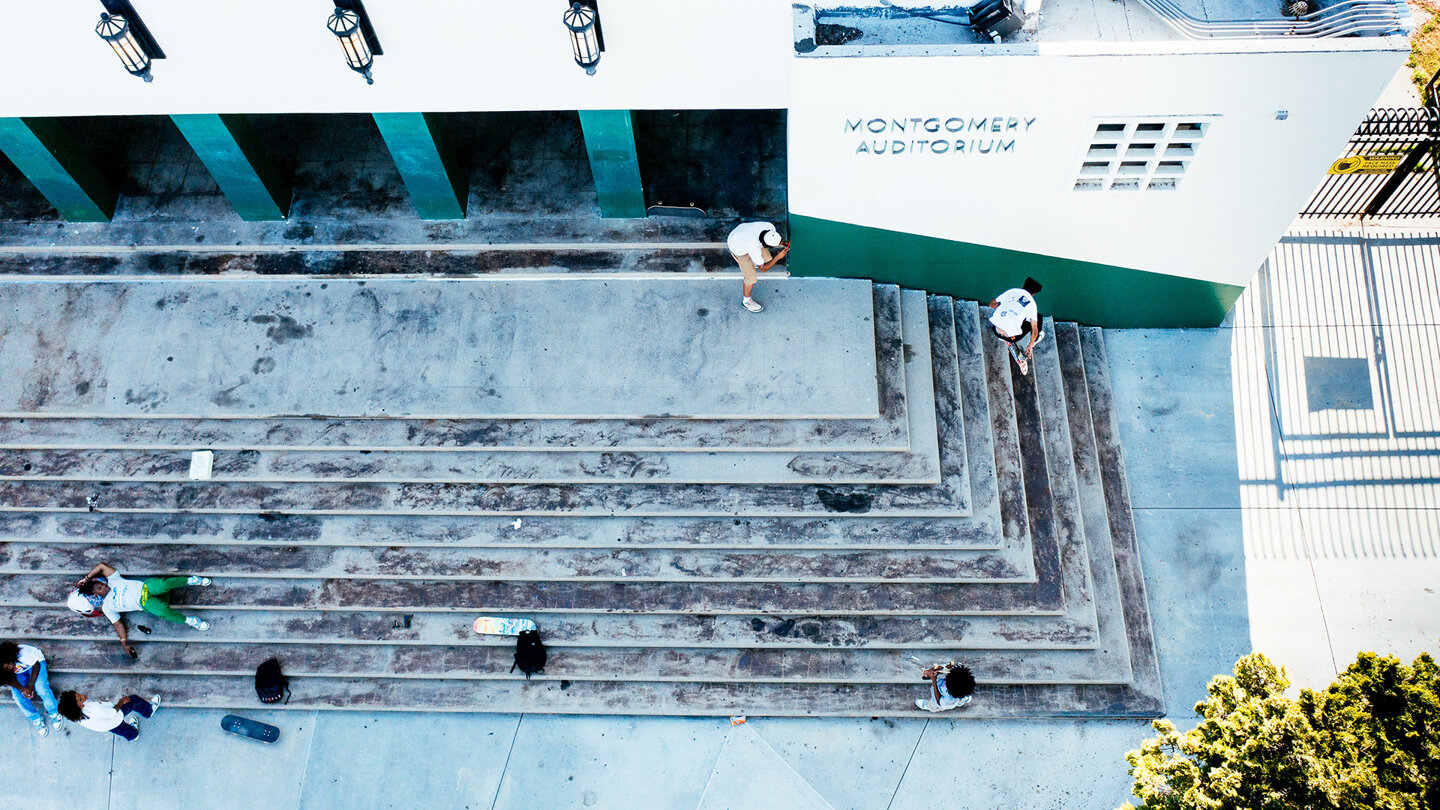
Let’s go back to before you started Crenshaw Skate Club for a bit. Did you have any creative role models growing up or experiences that really fueled your desire to make things?
I've always wanted to be creative and live by my own vision. Both my parents are accountants and I’d see them come home from their nine-to-five jobs and not being happy with their careers. I knew early on that wasn’t what I wanted to do. I wanted to be my own boss and do something for myself. I didn't know exactly what that was, but as I got older I started to pursue my creative ideas. I always loved the idea of creating something in my head and then making it and showcasing it to other people—that’s one of the best feelings in the world.
I had my first internship when I was 12 with Waraire Boswell. I was shadowing him, going to factories in Downtown LA, going to different meetings… just showing up with him. People would be like, “Who is this little kid?” and he’d tell them I was his intern, so he was my first creative role model. Even at 7 or 8 years old I was a super nerd. My dad would run errands and he would drop me off on Fairfax. I’d be at Supreme LA or the Diamond Store hanging out, being the little shop homie. Seeing all those brands coming out gave me a lot of inspiration.
Being so creative from a young age, what did skateboarding offer you that organized sports or school activities didn’t?
I think skating is like a truly independent sport and I'm a very independent person. For example, I played basketball, I stayed in the gym late, but if your teammates aren’t doing the same thing, you’re going to lose the game. It’s not all on you which is a bit frustrating for me. I wanted to do something where it was all up to me. Skateboarding is more creative (than traditional sports)—there’s not one way to do it, there’s not one style… it’s a great way to express yourself. I gravitated towards it for self-expression but also to clear my mind, but I didn’t know that until I started to take it seriously and started doing tricks.
At first, it was the creativity and also, watching videos and seeing how every skater had a different style and you could see their different backgrounds come through. They’re all doing the same tricks, but doing them differently. It quickly became everything. You meet your friends through skateboarding, you clear your mind through skateboarding… it becomes your life.
Social media can fuel creativity but also open people up to unwanted criticism. How have you dealt with that personally?
When it comes to Crenshaw Skate Club, 99% of the comments are positive. We’ve been in the community for six years now. If you scroll down our Instagram you can see the growth—it didn’t happen overnight. You start getting hate when you start working with bigger brands. The first thing I do isn’t product. My first Nike meeting was a pitch to do a community event—a shoe drive. I want to meet kids in my community, give them my email, give them advice, and give them a fresh pair of shoes. It wasn’t about a product collaboration right away. That actually means something. I’m not out there just selling things. I like to actually do what I preach. Being available is a big thing I strive to do. I’m not trying to benefit myself or the brand, I want to benefit the community and that’s why the positive outweighs the negative. If you don’t like the clothes or don’t like the brand, that’s not the point. The purpose is the message itself. We’ve stood on that and persisted. The hate shows up no matter what, but I have tunnel vision. If you don’t like it, I’m gonna keep it moving. I had to mature with the brand too—I started Crenshaw when I was 14. You can take that criticism really hard, but I soon came to realize, it’s not personal.
What keeps you focused… what drives that tunnel vision?
This didn’t start off as a brand—it was just an idea I was very passionate about that I wanted to put out in the world. Once it transformed into a brand, I didn’t operate as a brand. I knew I could tell my story and the messages I wanted to put out through clothing. I’m a story-first brand. There’s a bigger goal inside me. Also, growing up skateboarding in the inner city makes you grow a thick skin. You hear it all: Why aren’t you playing football, you’re not gonna get any girls, that’s some white people shit. Internet hate doesn’t faze me too much. [laughs]
Tell us more about starting the brand as a story.
I didn’t specifically know it at the time but I knew I wanted to have something when I was 14 and I was a beginner skater. It started with a group of friends and I and we were calling ourselves the Crenshaw Skate Posse. We had to band together because if you’re solo, you’re gonna get made fun of, you know? “Go to Venice Beach with that stuff” type of thing. If you’re with a crew, when you’re together, there’s less of that risk. As a crew, we grew close because we shared the struggle of skating in the inner city.
Also, when I’d look at skate videos or in magazines, when I’d go to skate parks or spots in my neighborhood, I’d see plenty of Black skaters but when I’d look at the mainstream skate industry, I didn’t see a lot of us. I saw that contrast and thought something was up. There weren’t a lot of people I could see that would inspire me to be a skateboarder. There was a short list of people to look up to. For other people, they have hundreds of thousands of people they can point to. I wanted to start something to represent us. It all started with a shirt we could all wear when we went out—if we all had a shirt that would be dope. But “Crenshaw Skate Posse”… sounds kind of corny on a shirt, so Crenshaw Skate Club had a ring to it. We had the first shirt and felt like a team. It was dope. For all the people who made fun of us for not playing sports, we had a jersey now. That was a special moment. Anywhere we went, people knew where we were from. Then people started asking how they could buy them.
At first, I was like, ‘Nah, that’s for us,’ but what made me open up to the idea of selling the shirts was people in the neighborhood wanting them—seeing that reaction and connection to where they are from meant something. If I could give that special feeling to people, it made me think about things differently. The first wholesaler was Supreme and it’s crazy to me that something that started with me and my friends could be a symbol to any kid that they can do something. Growing up in the city, you don’t have a lot of positive options. If you make it out, you’re a rapper, an athlete, or doing what you do to make money. The message of Crenshaw Skate Club is anything. For me, it was skateboarding, but I want it to be the same if you want to be an engineer or a neuroscientist in their community. I don’t want kids to look at it as just skateboarding, I want it to be anything you’re passionate about.
Can you talk a bit about what you’re studying at Stanford University?
Sure, right now I’m going into my junior year and studying computer science. It’s been a very interesting journey, moving out of LA and balancing the brand and school. Freshman year… the brand stuff was more “fun” and I found myself focusing on that, but I really had to learn to balance my work and assignments. A lot of people wonder why I’m going to college when I have a brand. To me, as you grow up, life doesn’t get easier. Managing time is a big skill to have. School has really taught me that valuable time management.
My main focus is on science and technology in society. Right now we're focusing on if and how AI advances and how it will affect society as a whole. Speaking of current times, think about how things like social media and the digital age impact us—thinking about how we interact with each other.
Let’s get into the shoe design. The Dunk really seems to encapsulate so many ideas and has so much symbolism, but also delivers it in a really cohesive way.
The main thing that stands on the shoe is the print. I've gotten a lot of different guesses about the reference as the images have leaked out, but it’s the sign in my neighborhood called the Crenshaw Square sign. The one that’s currently up there is red and blue, but the original sign was white with red printing, but as the sign got older and oxidized, this green patina started to show on the edges. When I got the opportunity to design the shoe I wanted a landmark that represented me and have that be the reference.
When I first started, I wrote down five places that were meaningful to me, then did more research and thought about how I would envision the shoe. When I got to the sign, I thought about the crust on the edges of the sign and thought it would be really dope. The other color choices come from the sign as well. There are a lot of hidden details on the shoe. Behind the tongue there’s the blocks graphic and under that it says “We are the ones you’ve been waiting for.” That’s an important quote to me because that’s the essence of who we are. Instead of waiting around for anyone, we made this.
If you take out the insole and flip it around, on the little pad it says, “90008,” at the bottom because that’s my zip code. In thinking about wearing a pair of shoes, you might not always see the little details, but you know they’re there and they make you feel good. I wanted to include little things like that—especially if you don’t know they’re there. The extra thought to put things there—the little Easter eggs are cool. There are also a lot of details that are super hidden. I’m waiting for people to find them and post them. You actually have to skate the shoe to figure them out—that’s all I’m saying. I wanted to include a bunch of extra laces and insoles so that it holistically feels like a cohesive product because I know what it’s like to save up to get a pair of shoes and how hard that can be for people who grew up like me. I want you to get a product with a lot of thought and details so you feel good about it.
What about the significance of the illustrations throughout the design?
That’s a reference to a daycare near my house that had different kids on these ABC blocks. I wanted to change the idea and the reference resonates with me because it talks about building a brand and building CSC in general.
Lastly, what does your neighborhood mean to you?
It really does mean everything to me. With all my actions, Crenshaw is on my mind. How is what I’m doing going to be reflected on people in my community and how do I do this for them? In some ways, I’m the first person from my community to do these things. I’m very mindful of my actions and also the aftereffects of all of this. I might be opening a door, but how am I keeping it open? Going to college, I don’t live in Crenshaw nine months a year, so how do I take that with me?
I’m a product of it and I can’t help but have it mean everything to me. The colors, the designs, and the graphics are things I saw in my daily life. It’s the beacon of inspiration for everything we do.
The Dunk Low by Crenshaw Skate Club releases August 5 exclusively in select skate shops.***
04
25
25
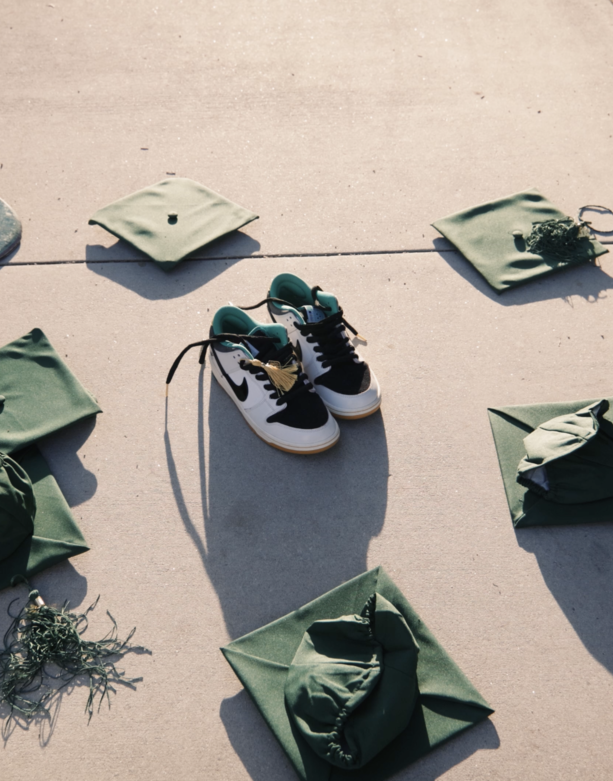
College Skateboarding Educational Foundation
With a Dunk Low colorway that captures the collegiate journey, we spoke to Keegan Guizard and Tommy Barker about CSEF’s origins, their unlikely academic journeys, and the details of their custom SB.
CSEF
Dunk Low

The Vault
08
01
24
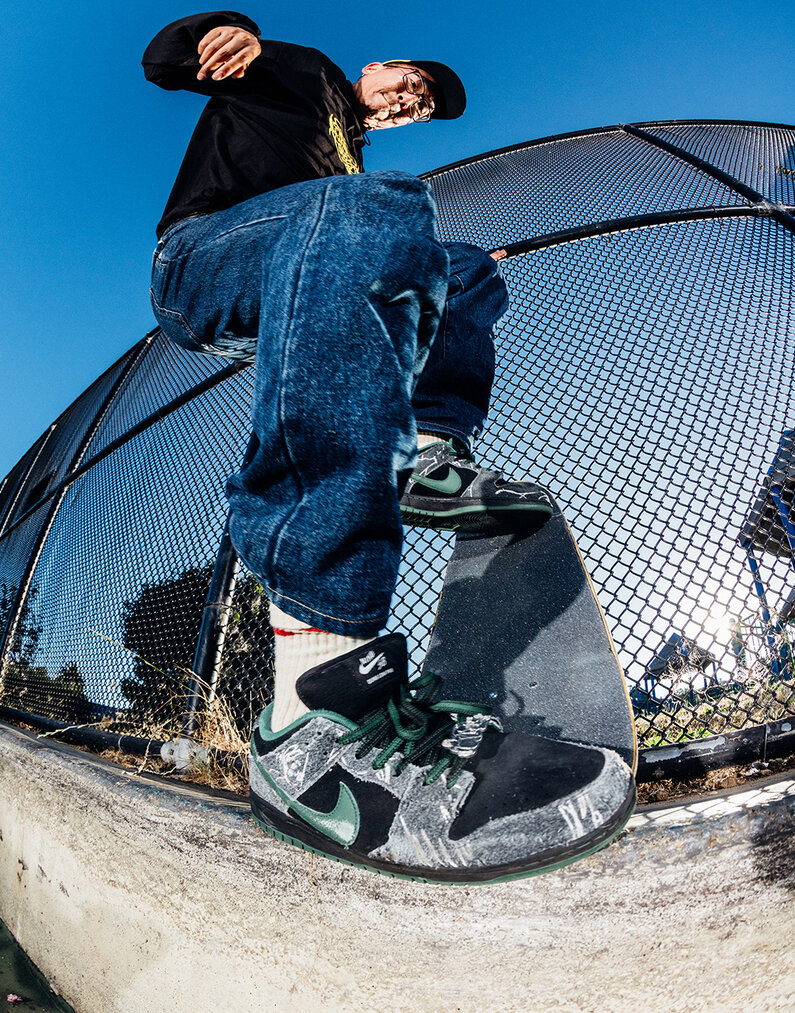
THERE
In an era where skateboarding is constantly debating whether it has reached an apex or is slipping away from its core values, THERE Skateboards stands as a testament to why we all fell in love with skateboarding in the first place.
Yuto
Matcha
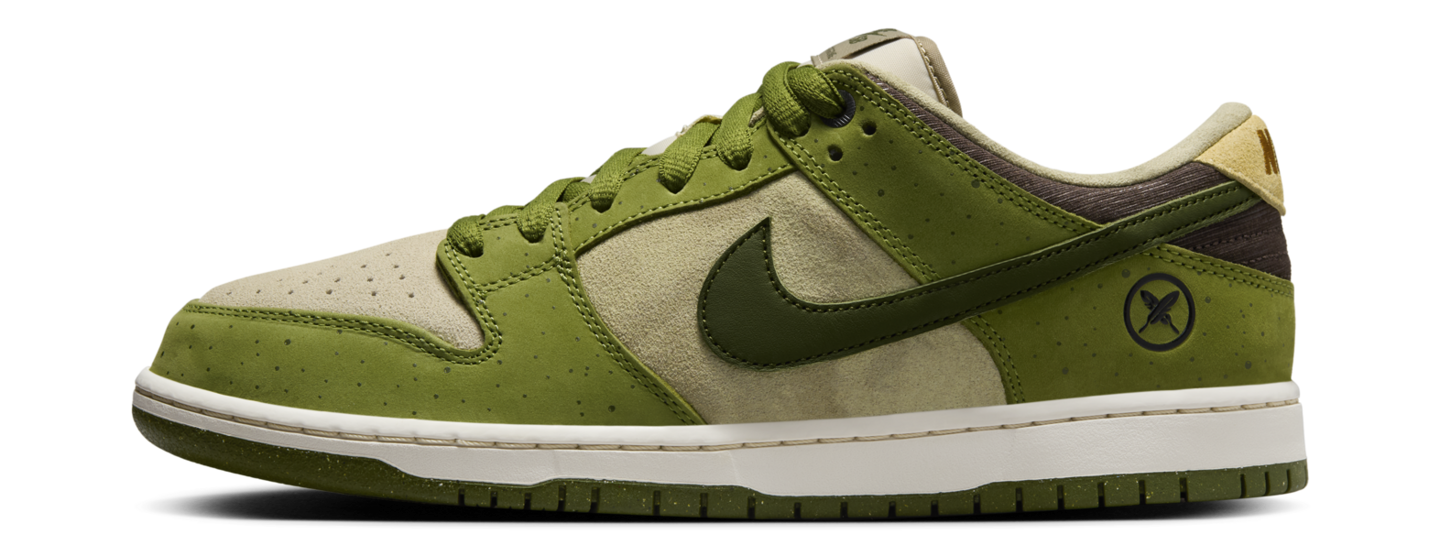
The Vault
Load More
